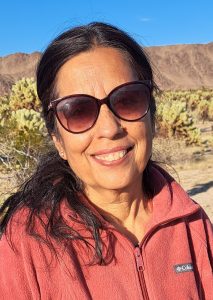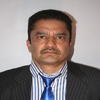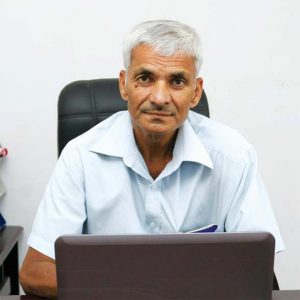Perception and reality
Do we perceive the real or what we desire to see? Two observers of the same event often recall differing details. Patanjali prescribed yoga to discipline the mind and dampen its wanderings, chittavritti nirodha; otherwise perception gets clouded by rationale, opposites, alternatives, sleep and memory. A well aware person’s brain emits clean theta waves that maintain long range temporal correlation, but the beta waves of people with confused identity lose such correlation due to interference with neural noise (Sci Rep 11, article number 422 (2021)). Sensors, used by scientists to extend their own, are cooled to reduce inherent noise. Touch, taste, smell, sound and sight are identified as the five physical senses, but the Gita teaches that the mind is the sixth sensor, indriyanam manashchasmi. So the conscious living mind cannot be completely stilled. This issue was thrust upon physicists as they explored the nanoworld of atomic interactions. Planck discerned light as a stream of discrete energy photons in 1900 to usher in the quantum era. Integers in the Balmer formula, for the wavelengths of light emitted by hydrogen atoms, arrived 15 years too early to be realized as quantic. Another 13 years passed before Bohr related it to quantized electronic momentum, which in turn was seen as a standing electron wave by de Broglie a decade later. The 2022 Nobel Prize in physics was awarded to Alain Aspect (France), Anton Zeilinger (Austria) and John Clauser (USA) for experiments supporting quantum randomness over local reality.
Wave-particle (or spirit-matter) duality of nature is not dialectical but complementary. Delayed choice experiments prove that the two apparitions cannot be seen simultaneously; a quantum immediately erases its wavy history for a particle detector, and vice-versa. Similar waves superpose to make bigger or smaller ones. This led Schrodinger to think of his cat in a live+dead superposed state until let out of the bag. Infinitely superposed general waves collapse randomly into one of the constituent eigenstates at detection. Einstein bemoaned how anyone can believe “that the Moon is not there when you are not looking at it.” Heisenberg’s limit on determinism required the product of uncertainties in conjugate variables like position and momentum to be greater than the Planck constant. A particle is located at best within the wavelength of light that bounces off it; more precision with shorter wavelength transfers higher momentum which becomes more uncertain. Wigner paradox, on seeing a quantum system differently than his friend, is under test.
Einstein used quantum to explain many effects and got the Nobel Prize for photoelectricity. Skeptical of the randomness, he later declared “God does not play dice with the Universe,” and Bohr retorted, “Stop telling God what to do.” Einstein, with Podolsky and Rosen, proposed the EPR paradox in 1935 to precipitate the issue. A subatomic particle like neutral pion at rest can decay into a photon pair, or any other allowed particle-antiparticle, that fly off in opposite directions with opposite spins and other quantum numbers. Measuring the properties of one immediately tells of the distant partner. Such faster than light “spooky action at a distance” as Einstein called, violates causality that requires cause to precede effect. They thought it suggestive of hidden variables that would preserve local reality. Schrodinger conjoined the decay pair into an entangled state of highly correlated components. Bell proved a theorem requiring the correlation coefficient of measurements in a locally real hidden variable theory to be less than a certain value, while quantum randomness would make it greater.
Clauser modified Bell inequality in 1972 to make it measurable, entangled photons about six meters apart, measured a greater value to reject local realism, and lost his two dollar bet against quantum randomness. In the next decade, Aspect closed the unidirectional loophole of Clauser’s observation, with random directional views of entangled photons traversing through 12 meters. Can a hidden variable impose sequence on what appears random? Then Zeilinger, who had entangled photons about half a kilometer apart, devised a method in 2017 to use light emitted by stars hundreds of light years away to generate randomness. One could still argue that the randomness was wiped out by an encoding in the starlight, about an experiment to be performed by an unborn scientist. Every loophole cannot be closed but becomes ever more fantastic, setting quantum theory on a stronger base. A scientific theory has to remain continually verified by experiments to ever increasing precision till the present; a single contradiction turns it into fiction.
Entanglement is used in teleportation to produce an exactly similar state elsewhere; but two identical states cannot co-exist, so the original has to be disentangled immediately; hence they can be used for unbreakable encryption in quantum networks. They are also the qubit of quantum computers. Binary digits (bits) are stored in our classical computer as either of two states represented by 0 and 1. A qubit can store any of the infinitely different superpositions of its two states, all fractions from 0 to 1, making quantum computers many fold quicker. In a recent interview with the Spanish newspaper El Pais (14 June 2023), Zeilinger says that a full quantum computer would require thousand qubits, and the present ones have just about 50. He thinks that quantum computers will enter cell phones in a hundred years. The Austrian Academy of Sciences entangled photons almost 250 km apart in an optical fiber, Max Planck Institute entangled a cluster of 14 photons, and the MIT atomic clock has been stabilized with entangled photons to lose less than one second in 150bn years. The whole Universe could be a single quantum state, entangled in a neural network (doi.org/10.3389/fphy.2020.525731) of the cosmic web that ensnares every mass to comprise the mind of nature.
As any observation physically affects the observed, absolute reality is unknowable. A surrounding that adjusts to our sense of awareness tells that nature is intrinsically conscious. This possibility will be discussed in subsequent articles.
The author is a professor of Physics
Udayaraj Khanal: A man of science
Quick facts
Born on 14 Jan 1955 in Kathmandu
Went to St Xavier’s School, Kathmandu
Graduated from Florida Atlantic University, US
Husband of Sarita Khanal
Father to Amsul Khanal and Shreya Khanal
 Ever since I can remember, I wanted to study physics. My education journey started with my parents teaching me at home. My mother taught me Nepali alphabets and my father took it further by encouraging me to ask questions about natural occurrences. They whetted my inquisitiveness. I was amazed as a child at how electricity lit up our home, made the doorbell ring, and turned the radio on. My father tried his best to explain how things worked, and it was him who suggested me to study physics.
When my family moved to Delhi after my father’s appointment as the Nepali ambassador to India, one of the first things my father got me was a science experiment set for children. I amused myself experimenting with the set, making electromagnets, bells, fans, parallel, series circuits of lamps, and so on. I went to St Columba’s School in Delhi, where we were given huge books, including A School Geometry by Hall and Stevens, from middle school onwards. Soon we were dealing with heat gained equals heat loss, reflection by plane and curved mirrors, and so on.
Between his duties, my father recalled from his long-gone schooldays to help me solve my school problems. I became good at science or mathematics. And by the time I returned to Kathmandu and rejoined St Xavier’s as a ninth grader, I was good enough to help my classmates.
After school, I enrolled in Florida Atlantic University, US. The beauty of Maxwell, Hamilton, Schrodinger and the E=mc2 equations was fading into endless mathematical manipulations. The only diversion for me, a college student back then, was the Watergate saga. I can still vividly remember the protesting youth singing along with Blows Against the Empire. These were highly politically charged times in the US and elsewhere in the world.
The closing of the Trial of the Chicago Seven regrew into that of the Gainsville Eight, and even our student union got disbanded. My father had just been appointed the ambassador to the US, and in these turbulent times in US history, I, a college student with long hair flowing down to my shoulders, participated in my father’s credential presentation ceremony before President Nixon. Those were strange and exciting times.
After finishing college, I wanted to join Tribhuvan University, but the plan did not pan out. So, I went to Delhi University. It was during the emergency era. I had jumped out of the frying pan into the fire. Youths around the world were in revolt against the establishment.
Getting accustomed to the varied accents of the professors from all over India took time. But I eventually found my footing.
During my PhD under Professor Panchapakesan, we published a series of papers on Hawking radiation. Hawking had shown that gravity could create everything from nothing, just as The Buddha had stated two millennia ago. I continued to publish from Nepal, as well, but my efforts to put us on the research map was deemed worthless in an academic landscape devoid of scientific culture. It took a decade to overcome this.
Over time, I ventured to publish my work beyond string theory and on to extended objects.
String theory was developed out of Kaluza and Klein theory of the 1920’s that had found electromagnetism in the fifth dimension of extended general relativity. Ten-dimensional superstring was found to unify all known particles and their interactions, including gravity. So I thought: “Why stop at strings when a liquid drop, that could become a filamentary string or stretch into a membrane, could more naturally represent the fundamental state of matter?” I ended up with the wave equation in the conducting medium, whose solution allowed faster than light transmission of signals.
As the media reported on this work, our scientific authorities ridiculed it with a public warning to “beware of rumors”. But by then, I was exploring the fundamentals of nature for my own entertainment, and was no more swayed by such negativity. I published two sequels on visits to various institutes in India, but could not quantize the formulation due to lack of resources. Leading labs are continually investigating superluminality, be it in quantum tunneling, neutrino propagation, or black hole jets. Only time will tell whether any observation is explained by my solution.
I also got together with my PhD students and used the Newman-Penrose method to study cosmological perturbation and galaxy formation. As I presented our work to an audience in Pittsburgh, which included Newman, he expressed surprise that their method to study black holes could be used in cosmology.
I have continued my explorations, preparing some results for publications, and furthering my understanding.
About him
Sarita Khanal (Spouse)
Ever since I can remember, I wanted to study physics. My education journey started with my parents teaching me at home. My mother taught me Nepali alphabets and my father took it further by encouraging me to ask questions about natural occurrences. They whetted my inquisitiveness. I was amazed as a child at how electricity lit up our home, made the doorbell ring, and turned the radio on. My father tried his best to explain how things worked, and it was him who suggested me to study physics.
When my family moved to Delhi after my father’s appointment as the Nepali ambassador to India, one of the first things my father got me was a science experiment set for children. I amused myself experimenting with the set, making electromagnets, bells, fans, parallel, series circuits of lamps, and so on. I went to St Columba’s School in Delhi, where we were given huge books, including A School Geometry by Hall and Stevens, from middle school onwards. Soon we were dealing with heat gained equals heat loss, reflection by plane and curved mirrors, and so on.
Between his duties, my father recalled from his long-gone schooldays to help me solve my school problems. I became good at science or mathematics. And by the time I returned to Kathmandu and rejoined St Xavier’s as a ninth grader, I was good enough to help my classmates.
After school, I enrolled in Florida Atlantic University, US. The beauty of Maxwell, Hamilton, Schrodinger and the E=mc2 equations was fading into endless mathematical manipulations. The only diversion for me, a college student back then, was the Watergate saga. I can still vividly remember the protesting youth singing along with Blows Against the Empire. These were highly politically charged times in the US and elsewhere in the world.
The closing of the Trial of the Chicago Seven regrew into that of the Gainsville Eight, and even our student union got disbanded. My father had just been appointed the ambassador to the US, and in these turbulent times in US history, I, a college student with long hair flowing down to my shoulders, participated in my father’s credential presentation ceremony before President Nixon. Those were strange and exciting times.
After finishing college, I wanted to join Tribhuvan University, but the plan did not pan out. So, I went to Delhi University. It was during the emergency era. I had jumped out of the frying pan into the fire. Youths around the world were in revolt against the establishment.
Getting accustomed to the varied accents of the professors from all over India took time. But I eventually found my footing.
During my PhD under Professor Panchapakesan, we published a series of papers on Hawking radiation. Hawking had shown that gravity could create everything from nothing, just as The Buddha had stated two millennia ago. I continued to publish from Nepal, as well, but my efforts to put us on the research map was deemed worthless in an academic landscape devoid of scientific culture. It took a decade to overcome this.
Over time, I ventured to publish my work beyond string theory and on to extended objects.
String theory was developed out of Kaluza and Klein theory of the 1920’s that had found electromagnetism in the fifth dimension of extended general relativity. Ten-dimensional superstring was found to unify all known particles and their interactions, including gravity. So I thought: “Why stop at strings when a liquid drop, that could become a filamentary string or stretch into a membrane, could more naturally represent the fundamental state of matter?” I ended up with the wave equation in the conducting medium, whose solution allowed faster than light transmission of signals.
As the media reported on this work, our scientific authorities ridiculed it with a public warning to “beware of rumors”. But by then, I was exploring the fundamentals of nature for my own entertainment, and was no more swayed by such negativity. I published two sequels on visits to various institutes in India, but could not quantize the formulation due to lack of resources. Leading labs are continually investigating superluminality, be it in quantum tunneling, neutrino propagation, or black hole jets. Only time will tell whether any observation is explained by my solution.
I also got together with my PhD students and used the Newman-Penrose method to study cosmological perturbation and galaxy formation. As I presented our work to an audience in Pittsburgh, which included Newman, he expressed surprise that their method to study black holes could be used in cosmology.
I have continued my explorations, preparing some results for publications, and furthering my understanding.
About him
Sarita Khanal (Spouse)
 He has been an awesome support throughout. It is joyful to see him work on his equations. When he started taking me to conferences abroad, he was surprised that I could easily make friends with renowned professors with whom he could communicate only on the pretext of some equations or matters related to the field of science.
Sanat Kumar Sharma (Student)
He has been an awesome support throughout. It is joyful to see him work on his equations. When he started taking me to conferences abroad, he was surprised that I could easily make friends with renowned professors with whom he could communicate only on the pretext of some equations or matters related to the field of science.
Sanat Kumar Sharma (Student)
 He is a veteran physicist. There would be no doubt to call him Albert Einstein of Nepal. I still remember, when Girija Prasad Koirala was the prime minister, Udayaraj sir's father was his advisor and he was offered the position of vice-chancellor at Nepal Academy of Science and Technology. But he denied the position saying that he was a teacher whose work is to teach and not lead an institute like NAST. He is a very gentle and genuine person.
Lok Narayan Jha (Colleague)
He is a veteran physicist. There would be no doubt to call him Albert Einstein of Nepal. I still remember, when Girija Prasad Koirala was the prime minister, Udayaraj sir's father was his advisor and he was offered the position of vice-chancellor at Nepal Academy of Science and Technology. But he denied the position saying that he was a teacher whose work is to teach and not lead an institute like NAST. He is a very gentle and genuine person.
Lok Narayan Jha (Colleague)
 He is the most brilliant physicist that Nepal has ever had. From Nepal, he published numerous outstanding research works and findings on international platforms. He also published research papers arguing that light is not the fastest traveling object. In our physics department, everyone used to rush to him if they had any physics-related problems.
He is the most brilliant physicist that Nepal has ever had. From Nepal, he published numerous outstanding research works and findings on international platforms. He also published research papers arguing that light is not the fastest traveling object. In our physics department, everyone used to rush to him if they had any physics-related problems.








